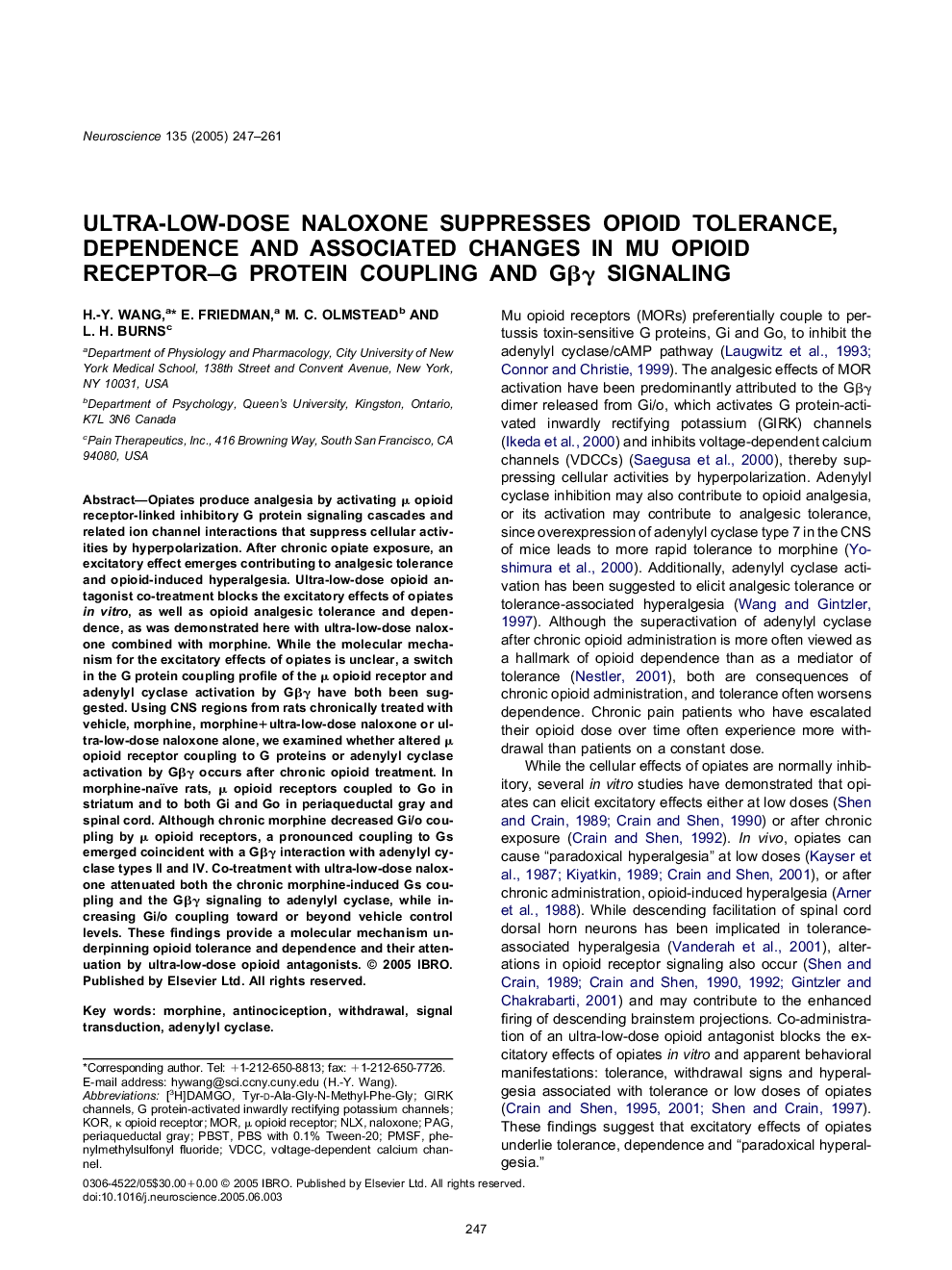| کد مقاله | کد نشریه | سال انتشار | مقاله انگلیسی | نسخه تمام متن |
|---|---|---|---|---|
| 9425770 | 1295890 | 2005 | 15 صفحه PDF | دانلود رایگان |
عنوان انگلیسی مقاله ISI
Ultra-low-dose naloxone suppresses opioid tolerance, dependence and associated changes in mu opioid receptor-G protein coupling and Gβγ signaling
دانلود مقاله + سفارش ترجمه
دانلود مقاله ISI انگلیسی
رایگان برای ایرانیان
کلمات کلیدی
MORNLX[3H]DAMGOVDCCGIRK channelsPAGPMSFPBSTμ Opioid receptor - μ گیرنده اپیوئیدadenylyl cyclase - آدنیلات سیکلاز، آدنیلیل سیکلازWithdrawal - برداشت از حسابperiaqueductal gray - خاکستری پرآبیAntinociception - ضد انعقادphenylmethylsulfonyl fluoride - فنیل متیل سولفونیل فلورایدmorphine - مورفینNaloxone - نالوکسانSignal transduction - هدایت سیگنالKOR - وقتیVoltage-dependent calcium channel - کانال کلسیم وابسته به ولتاژκ opioid receptor - گیرنده اپیدمی κ
موضوعات مرتبط
علوم زیستی و بیوفناوری
علم عصب شناسی
علوم اعصاب (عمومی)
پیش نمایش صفحه اول مقاله

چکیده انگلیسی
Opiates produce analgesia by activating μ opioid receptor-linked inhibitory G protein signaling cascades and related ion channel interactions that suppress cellular activities by hyperpolarization. After chronic opiate exposure, an excitatory effect emerges contributing to analgesic tolerance and opioid-induced hyperalgesia. Ultra-low-dose opioid antagonist co-treatment blocks the excitatory effects of opiates in vitro, as well as opioid analgesic tolerance and dependence, as was demonstrated here with ultra-low-dose naloxone combined with morphine. While the molecular mechanism for the excitatory effects of opiates is unclear, a switch in the G protein coupling profile of the μ opioid receptor and adenylyl cyclase activation by Gβγ have both been suggested. Using CNS regions from rats chronically treated with vehicle, morphine, morphine+ultra-low-dose naloxone or ultra-low-dose naloxone alone, we examined whether altered μ opioid receptor coupling to G proteins or adenylyl cyclase activation by Gβγ occurs after chronic opioid treatment. In morphine-naïve rats, μ opioid receptors coupled to Go in striatum and to both Gi and Go in periaqueductal gray and spinal cord. Although chronic morphine decreased Gi/o coupling by μ opioid receptors, a pronounced coupling to Gs emerged coincident with a Gβγ interaction with adenylyl cyclase types II and IV. Co-treatment with ultra-low-dose naloxone attenuated both the chronic morphine-induced Gs coupling and the Gβγ signaling to adenylyl cyclase, while increasing Gi/o coupling toward or beyond vehicle control levels. These findings provide a molecular mechanism underpinning opioid tolerance and dependence and their attenuation by ultra-low-dose opioid antagonists.
ناشر
Database: Elsevier - ScienceDirect (ساینس دایرکت)
Journal: Neuroscience - Volume 135, Issue 1, 2005, Pages 247-261
Journal: Neuroscience - Volume 135, Issue 1, 2005, Pages 247-261
نویسندگان
H.-Y. Wang, E. Friedman, M.C. Olmstead, L.H. Burns,